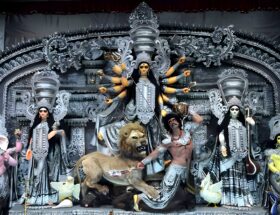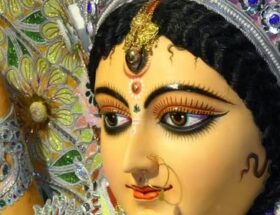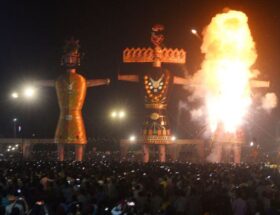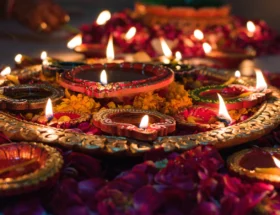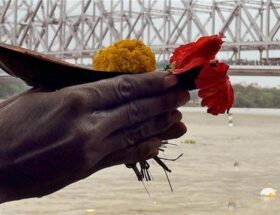
Bhai Dooj: A Celebration of Sibling Love and Bond

In the rich tapestry of Indian culture and traditions, there exists a day that embodies the profound and enduring love between siblings. Bhai Dooj, a festival that is celebrated with unmatched enthusiasm and devotion, is a testament to the unique bond shared by brothers and sisters. Join us as we delve into the depths of this heartwarming celebration, exploring its significance, rituals, and the emotions that make it a cherished occasion.
Understanding the Essence of Bhai Dooj
This festival, also known as Bhai Tika in Nepal, beautifully encapsulates the essence of sibling love. It falls on the fifth day of Diwali, the festival of lights. While Diwali is a grand celebration in its own right, this takes centre stage to honour the love between brothers and sisters.
Rituals That Speak Volumes
On this special day, sisters perform aarti (a ceremonial prayer) for their brothers, marking their foreheads with a tilak (a vermillion mark). This ritual is not merely a tradition; it is an emotional exchange of blessings and promises. The tilak symbolizes protection, love, and the unbreakable bond shared between siblings.
The Gift of Love
No Indian festival is complete without the exchange of gifts, and Bhai Dooj is no exception. Brothers express their love and affection by presenting thoughtful gifts to their sisters. These gifts are not just material possessions; they are tokens of love and appreciation, a reminder of the cherished moments they have shared.
Indulging in Sweet Delights
Food has a magical way of bringing people together, and Bhai Dooj is a testament to this truth. Families come together to savor traditional sweets like gujiya and mithai. Each bite is a celebration of love and the sweet memories that bind siblings together.
The Deeper Significance
Beyond the rituals and festivities, Bhai Dooj carries a profound significance. It symbolises the unconditional love and support that brothers provide for their sisters. It’s a day when promises are renewed, and the bond is reaffirmed, reflecting the unbreakable ties that hold families together.
Regional Flavors
While the core essence of Bhai Dooj remains the same, it is celebrated with regional variations that reflect the cultural diversity of India and Nepal.
- North India: In northern states, Bhai Dooj is celebrated with grandeur. Sisters perform aarti for their brothers, who, in return, promise to protect them. It’s a day of family gatherings, feasting, and joyous celebrations.
- West India: In states like Gujarat and Maharashtra, Bhai Dooj is known as Bhau Beej. Sisters prepare delectable dishes for their brothers. The day is marked by traditional rituals and a strong sense of togetherness.
- East India: In states like Bengal, this celebration is known as Bhai Phota. Sisters give tilak with Sandlewood dust on the forehead of brother, praying for long life of her brother.
- South India: In the southern states, sisters apply kumkum (vermillion) on their brothers’ foreheads after performing aarti. The day is filled with love, laughter, and the joy of sharing.
Conclusion: A Celebration of Unconditional Love
Bhai Dooj is not just a festival; it’s an expression of the deep and enduring love that binds siblings together. As we come together to perform rituals, exchange gifts, and share sweets, we are not merely celebrating tradition; we are celebrating the beautiful relationships that enrich our lives.
In the warm embrace of Bhai Dooj, we find solace and joy. It is a reminder that, no matter where life takes us, the love between siblings remains a constant, an emotional anchor in the vast sea of existence. This festival serves as a testament to the enduring bonds that make our lives all the more meaningful.
FAQs
Q1: What is the significance of Bhai Dooj?
Answer: Bhai Dooj is a festival that celebrates the strong bond between brothers and sisters. It signifies the love, protection, and blessings that siblings share with each other.
Q2: When is Bhai Dooj celebrated?
Answer: Bhai Dooj is celebrated on the fifth day of Diwali, a Hindu festival of lights, which usually falls in October or November.
Q3: What are the main rituals of Bhai Dooj?
Answer: The main rituals of Bhai Dooj include sisters performing aarti (a ceremonial prayer) for their brothers, applying a tilak (vermillion mark) on their foreheads, and exchanging gifts as tokens of love.
Q4: Are there regional variations in how Bhai Dooj is celebrated?
Answer: Yes, Bhai Dooj is celebrated with regional nuances across India. In North India, sisters fast and perform aarti, while in West India, it is known as Bhau Beej and involves special dishes. In South India, sisters apply kumkum on their brothers’ foreheads.
Q5: What is the significance of the tilak applied during the festival?
Answer: The tilak symbolises blessings and protection. Sisters apply it on their brothers’ foreheads as a gesture of love and good wishes for Bhai Dooj.

